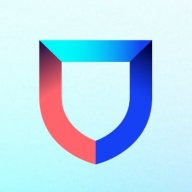


Lacework FortiCNAPP and Skyhawk Security are both prominent players in the cybersecurity solutions market. While Lacework FortiCNAPP is praised for its cost-effectiveness and broad support, Skyhawk Security outshines with its advanced capabilities and extensive features, offering more depth for those investing in high-level insights.
Features: Lacework FortiCNAPP focuses on cloud security monitoring, offering threat detection tools with strong integrations and automation capabilities. Skyhawk Security is distinct for its advanced analytics and comprehensive threat intelligence. Skyhawk's feature set is broader, appealing to tech buyers seeking deeper insights.
Ease of Deployment and Customer Service: Lacework FortiCNAPP provides a seamless deployment experience backed by responsive customer support to quickly meet client needs. Skyhawk Security also ensures easy deployment while providing extensive documentation and resources. Skyhawk offers richer support materials that facilitate smoother customer onboarding.
Pricing and ROI: Lacework FortiCNAPP is known for its attractive pricing, delivering solid value that leads to positive ROI. Skyhawk Security, with its higher setup costs, offers substantial returns through extensive capabilities. Skyhawk's premium pricing reflects its comprehensive functionality and potential for long-term value.



SentinelOne Singularity Cloud Security offers a streamlined approach to cloud security with intuitive operation and strong integration capabilities for heightened threat detection and remediation efficiency.
Singularity Cloud Security stands out for its real-time detection and response, effectively minimizing detection and remediation timelines. Its automated remediation integrates smoothly with third-party tools enhancing operational efficiency. The comprehensive console ensures visibility and support for forensic investigations. Seamless platform integration and robust support for innovation are notable advantages. Areas for development include improved search functionality, affordability, better firewall capabilities for remote users, stable agents, comprehensive reporting, and efficient third-party integrations. Clarity in the interface, responsive support, and real-time alerting need enhancement, with a call for more automation and customization. Better scalability and cost-effective integration without compromising capabilities are desired.
What are SentinelOne Singularity Cloud Security's standout features?SentinelOne Singularity Cloud Security is deployed in industries needing robust cloud security posture management, endpoint protection, and threat hunting. Utilized frequently across AWS and Azure, it assists in monitoring, threat detection, and maintaining compliance in diverse environments while providing real-time alerts and recommendations for proactive threat management.
Lacework FortiCNAPP provides robust cloud security, combining vulnerability management and multi-cloud insight with user-friendly controls, machine learning detection, and compliance support.
Lacework FortiCNAPP specializes in cloud security by merging machine learning anomaly detection with agent-based vulnerability management to offer detailed alerts and compliance reports. Its comprehensive approach allows continuous monitoring across AWS and Kubernetes, providing insights from an attacker's perspective. The platform offers automation and seamless Slack integration, facilitating collaborative and efficient cloud security management. Users value its ability to handle multi-cloud environments and scan IAC scripts, configurations, and compute nodes across AWS and GCP.
What are the key features?Organizations across sectors leverage Lacework FortiCNAPP for cloud security, focusing on compliance, security posture, and vulnerability management. It is widely used for monitoring AWS and Kubernetes environments, scanning IAC scripts, configurations, and securing compute nodes. It supports multi-cloud security posture management and log ingestion, enabling companies to maintain strong cloud infrastructures without dedicated security layers.
Migrating workloads to the public cloud creates new threat surfaces which can be exploited by attackers and lead to theft of your customers' data.
Skyhawk Security provides comprehensive protection for applications hosted on public clouds with multi-layer defenses which secure the cloud environment against identity and access abuse, protect against malicious user behavior, and secure the overall security posture of the public cloud environment.
We monitor all Cloud Workload Protection Platforms (CWPP) reviews to prevent fraudulent reviews and keep review quality high. We do not post reviews by company employees or direct competitors. We validate each review for authenticity via cross-reference with LinkedIn, and personal follow-up with the reviewer when necessary.